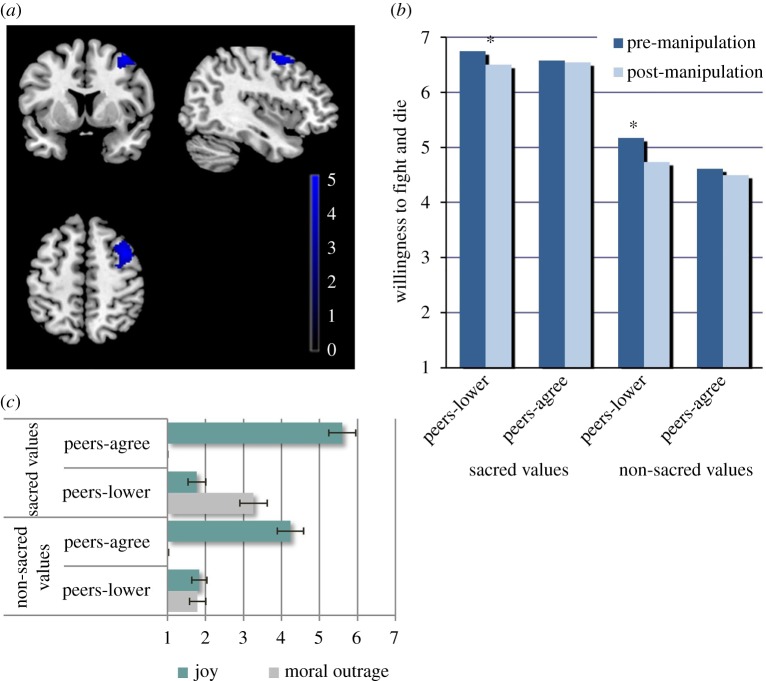Figure 3.
Effects of lower willingness to fight and die community ratings (peers-lower) on participants' ratings and self-reported emotions. (a) Right dlPFC activity predicted by change in willingness to fight and die for sacred values overlapped with R dlPFC activity associated with non-sacred value versus sacred value during the willingness to fight and die rating paradigm (small volume correction using R dlPFC mask from non-sacred versus sacred value contrast, T = 3.42, p < 0.05 FWEc, single voxel p < 0.001). The colour bar represents t-values. (b) Significant interaction between feedback type and pre/post-manipulation ratings in willingness to fight and die indicating a change in judgement in alignment with peers (p < 0.008). (c) Sacred values elicited the greater degrees of emotion compared with non-sacred values, with higher reported moral outrage at conflicting feedback (left, p < 0.001) and higher joy at non-conflicting feedback (right, p < 0.002). (*) indicates significant results.

